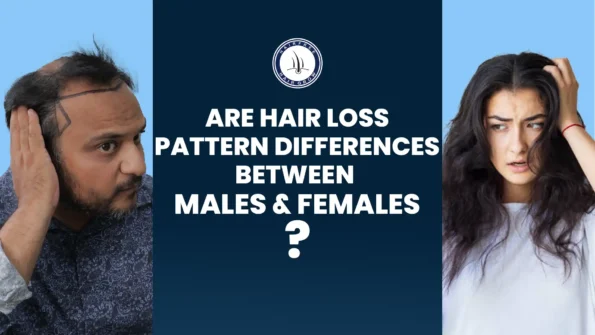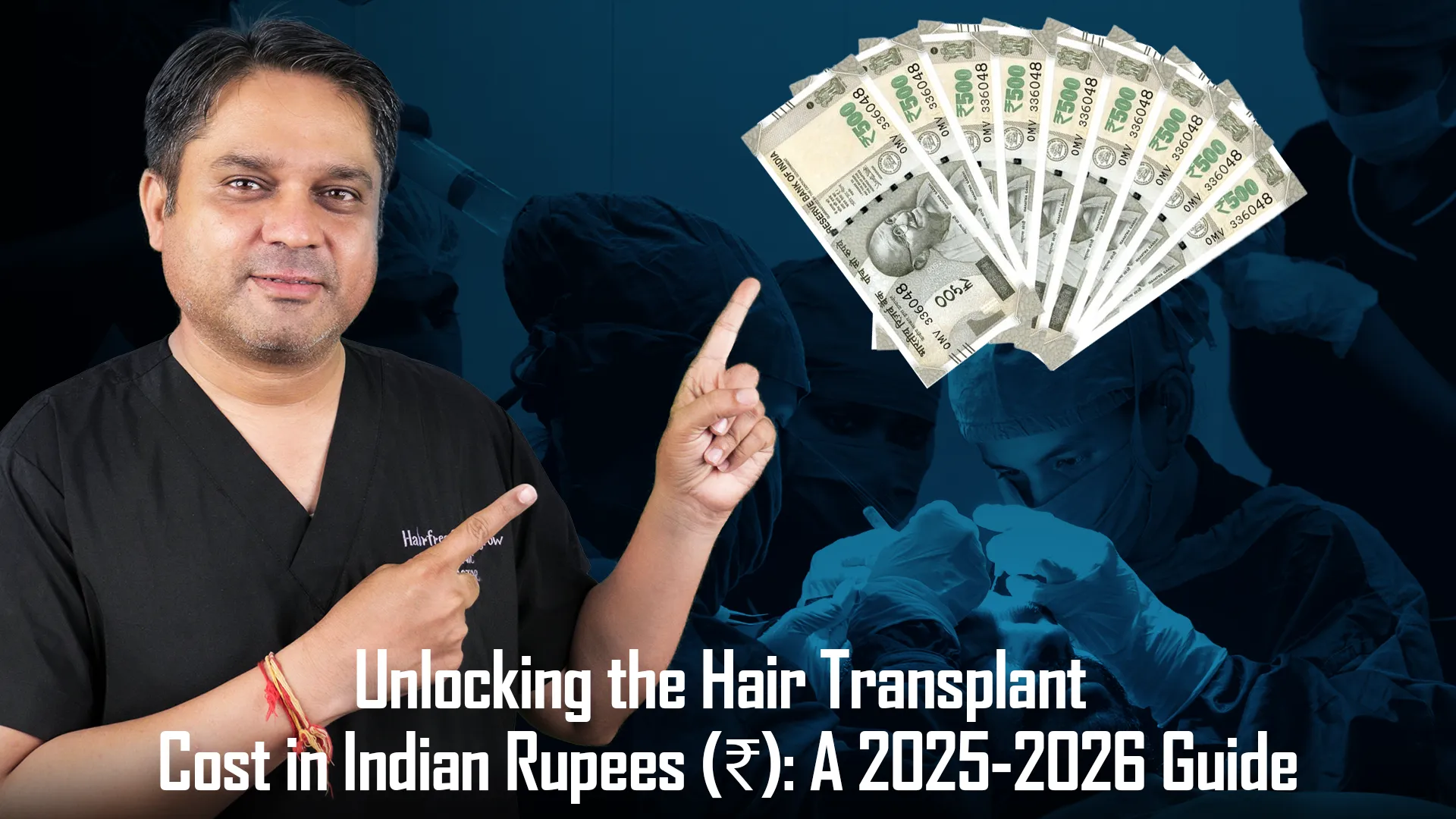Are you noticing more hair in your brush or thinning areas on your scalp? Hair loss can be a frustrating and concerning experience, but you’re not alone. Men and women experience hair loss differently due to various factors like hormones, genetics, and even stress. In this blog, we’ll explore the unique hair loss patterns in men and women, why they occur, and what you can do to manage and treat it effectively. Whether you’re looking to understand your hair loss better or seeking practical solutions, we’ve got you covered with friendly, straightforward advice.
What is Hair Loss?
Hair loss, whether in males or females, follows natural cycles of growth and shedding. Each hair follicle goes through a growth phase (anagen), which lasts for 5-7 years, followed by a shedding phase (catagen) and a rest phase (telogen). This cycle repeats throughout our lives and is completely normal.
Types of Hair Loss
Hair loss can be broadly categorized into two types: scarring alopecia and non-scarring alopecia.
Scarring Alopecia:
This type is less common but can be caused by conditions such as:- Traction Alopecia: Often results from tight hairstyles that pull on the hair roots.
- Lichen Planopilaris: An inflammatory condition that can cause scarring.
- Frontal Fibrosing Alopecia: A condition that leads to hair loss at the front of the scalp.
Non-Scarring Alopecia:
This is more common and includes:- Androgenetic Alopecia: Also known as male and female pattern baldness.
- Alopecia Areata: An autoimmune condition that can cause sudden hair loss.
- Telogen Effluvium: Caused by stress, illness, or hormonal changes, leading to temporary hair shedding.
In this discussion, we’ll focus on androgenetic alopecia and the differences between male and female pattern hair loss.
Gender-Specific Hair Loss: Male Pattern Hair Loss
About 50% of men experience hair loss by the age of 50. It can start as early as puberty, around 18-19 years old. Male pattern hair loss is driven by testosterone, which is converted to dihydrotestosterone (DHT) by the enzyme 5-alpha reductase. DHT causes hair follicles to shrink, leading to thinning hair.
Men typically experience hair loss in two main patterns:
- Frontal Hairline Recession: This creates an M-shaped hairline.
- Vertex Thinning: This causes a bald spot on the top of the head, which can merge with the frontal hairline recession over time.
The severity of male pattern hair loss is classified from grade 1 to grade 7 on the Norwood-Hamilton scale. Early intervention is crucial to prevent further hair loss.
Gender-Specific Hair Loss: Female Pattern Hair Loss
Female pattern hair loss is less straightforward due to lower levels of testosterone and 5-alpha reductase. However, hormonal imbalances, such as those seen in polycystic ovarian syndrome (PCOS), can lead to hair loss. Women with PCOS may also experience acne and unwanted hair growth.
Menopause is another critical period for women, as the decline in estrogen and progesterone levels can lead to a relative increase in testosterone, accelerating hair loss.
Women usually experience diffuse thinning across the scalp rather than specific patterns like men.
Treatment Options for Hair Loss
Treatments for hair loss can be divided into three categories: topical applications, oral medications, and external treatments.
Topical Treatments:
- Minoxidil: Available in 2% and 5% formulations, minoxidil can help increase hair growth by prolonging the anagen phase.
- DHT Blockers: These can be applied topically to prevent DHT from shrinking hair follicles.
Oral Medications:
- Minoxidil: Oral minoxidil can also be used but with caution, especially in women, due to the risk of unwanted hair growth.
- DHT Blockers: Finasteride and dutasteride are effective DHT blockers for men. Women may use anti-androgens like spironolactone or certain birth control pills.
External Treatments:
- Low-Level Laser Therapy: Red light therapy can boost hair growth by increasing cell metabolism.
- Microneedling: This treatment stimulates hair growth by creating tiny wounds in the scalp.
- Exosome Therapy: Emerging as a promising option for hair growth.
Hair Transplantation: Surgical Treatments
Hair transplantation becomes an option when you reach more advanced stages of baldness, specifically in grades six, seven, and eight. If you’re experiencing significant hair loss and want to restore hair in bald areas, a hair transplant might be the solution.
If you’re considering a hair transplant and want to ensure that you avoid these common pitfalls, we highly recommend HairFree HairGrow Clinic. Our experienced team, commitment to natural results, and dedication to patient satisfaction set us apart.
Ready to take the next step? Visit HairFree HairGrow Clinic and let us help you achieve the hair you’ve always wanted.
- Visit any branch for your hair problem or call us at: +91-72 72 83 2222
- We are located in Surat, Pune (Pimple Gurav), Pune (Kharadi), Hyderabad, Ahmedabad, Kolkata, Indore, Bhopal, Delhi (Gurugram), Nagpur, Mumbai, Vapi (Silvassa), and Bangladesh.
Medications and Treatments Before Hair Transplant
Before considering a transplant, there are medications and treatments that can help retain and strengthen your existing hair. Options like minoxidil, finasteride, and procedures such as Platelet-Rich Plasma (PRP) therapy can help maintain your hair. However, these treatments can’t regrow hair in completely bald areas. Once the hair is gone due to genetic, hormonal, or age-related factors, it won’t come back without a transplant.
How Does Hair Transplant Work?
Hair transplantation involves taking hair from the back of your head and implanting it in the bald areas. This transplanted hair is natural and permanent, meaning it will grow like your regular hair for about 15 to 20 years. You can cut, color, and style it just like your normal hair.
When done by a trained and professional dermatologist, hair transplants are very safe. However, if the procedure is performed by an unprofessional or untrained individual, complications such as infections, scars, and irregular hair growth can occur.
Modern Techniques: Follicular Unit Extraction (FUE)
The latest and most advanced method of hair transplantation is Follicular Unit Extraction (FUE). Unlike the old strip method, FUE involves extracting individual hair follicles and implanting them in the bald areas. This method is safe, effective, and provides natural-looking results that can last for many years.
Conclusion
Understanding the differences between male and female pattern hair loss is essential for effective treatment. It’s important to consult a healthcare professional to determine the underlying cause and receive appropriate treatment. Remember, hair loss can be due to multiple factors, and addressing all contributing factors is key to regaining your hair.
I hope this blog helps you understand the nuances of hair loss and encourages you to seek the right treatment. Stay informed and take action early to maintain your crowning glory!
Written By
MBBS, MD
Dr. Pratibha Pradhan is a renowned hair specialist with expertise in hair loss pattern differences between males and females. She offers personalized treatments, helping patients understand their hair loss causes and regain healthy hair through effective, tailored solutions.
Disclaimer
We’ve made all possible efforts to ensure that the information provided here is accurate, up-to-date and complete, however, it should not be treated as a substitute for professional medical advice, diagnosis or treatment. See Detailed Disclaimers Here.





